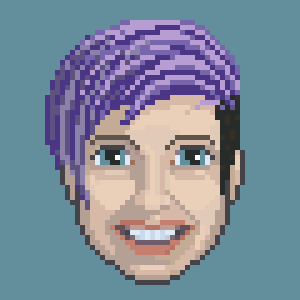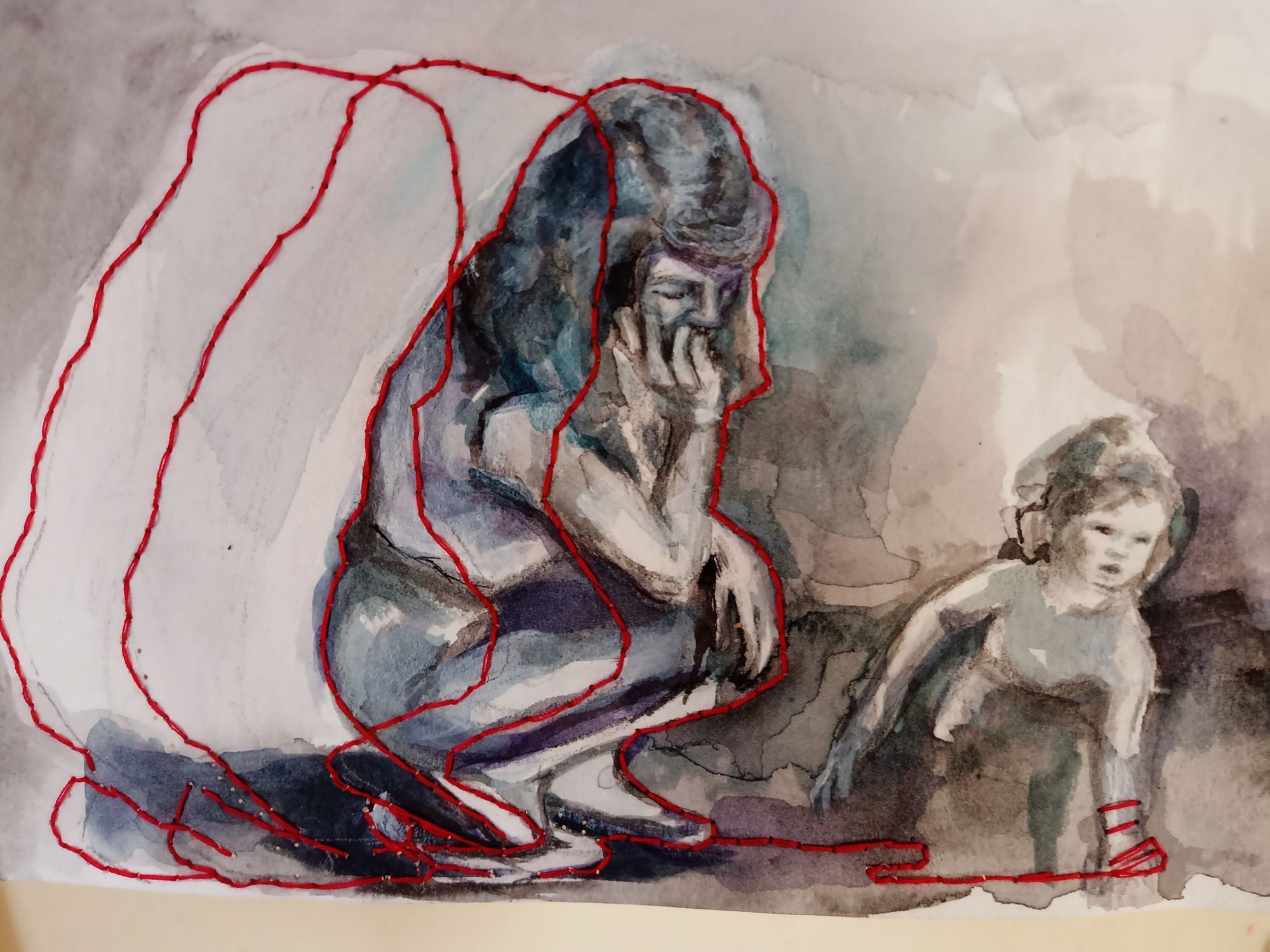Ashleigh Rogers features an artist every month in Tumbleweird. This month, I had the rare pleasure of interviewing Ashleigh about her own work.
What do you do as Creative Director at DrewBoy Creative?
In regard to my work at DBC, I have been there about two and a half years, and I can't even begin to describe the gratitude I have for how much Davin has taught me, and all of the opportunities I have had in this position! I get to help plan, advertise, and execute art shows — everything from creating Facebook posts, to curations, to hanging, to applying for grants to fund shows!
You've been interviewing artists for your Tumbleweird column for well over a year now. Has that experience changed the way you view local art/artists? If so, in what ways?
Interviewing so many local artists over the past couple years has been such an honor and has reinforced for me the fact that our community is bursting at the seams with incredible, talented creatives (who also happen to be really lovely humans), and that we can build the art scene of our wildest dreams together!! It has also reminded me how powerful art is — that it is a healing tool, it is a way to communicate important ideas and gain new perspective, and it provides a path for community and connection.



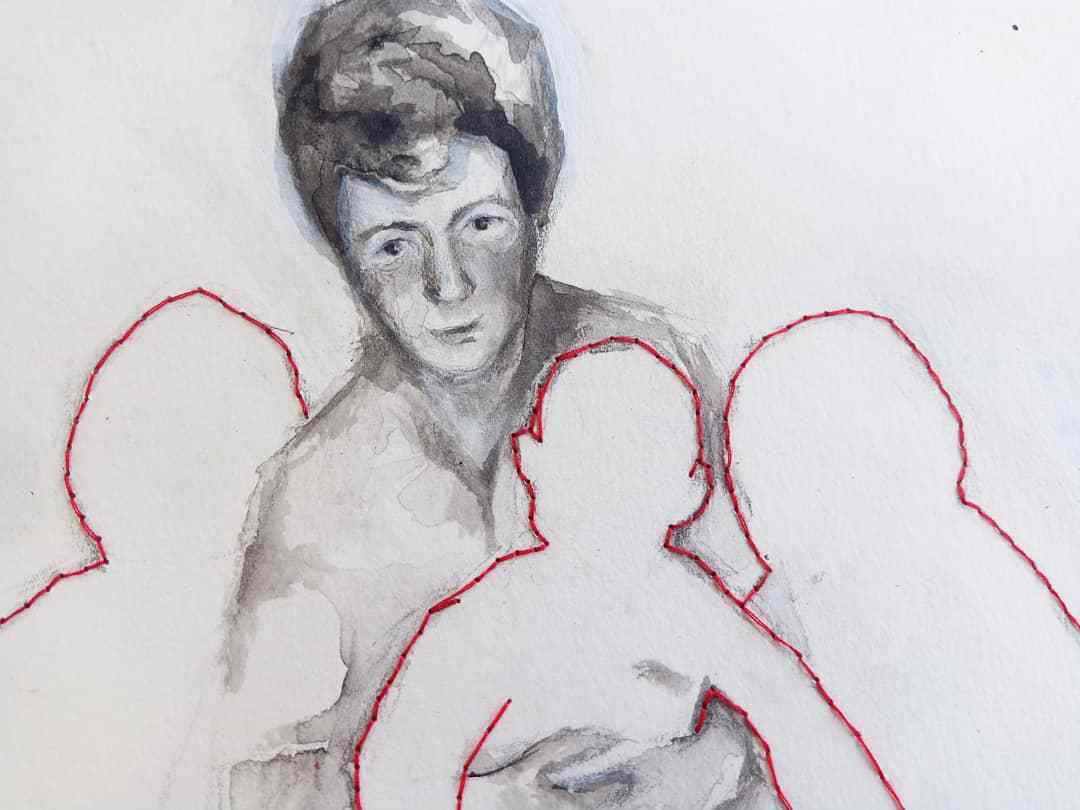
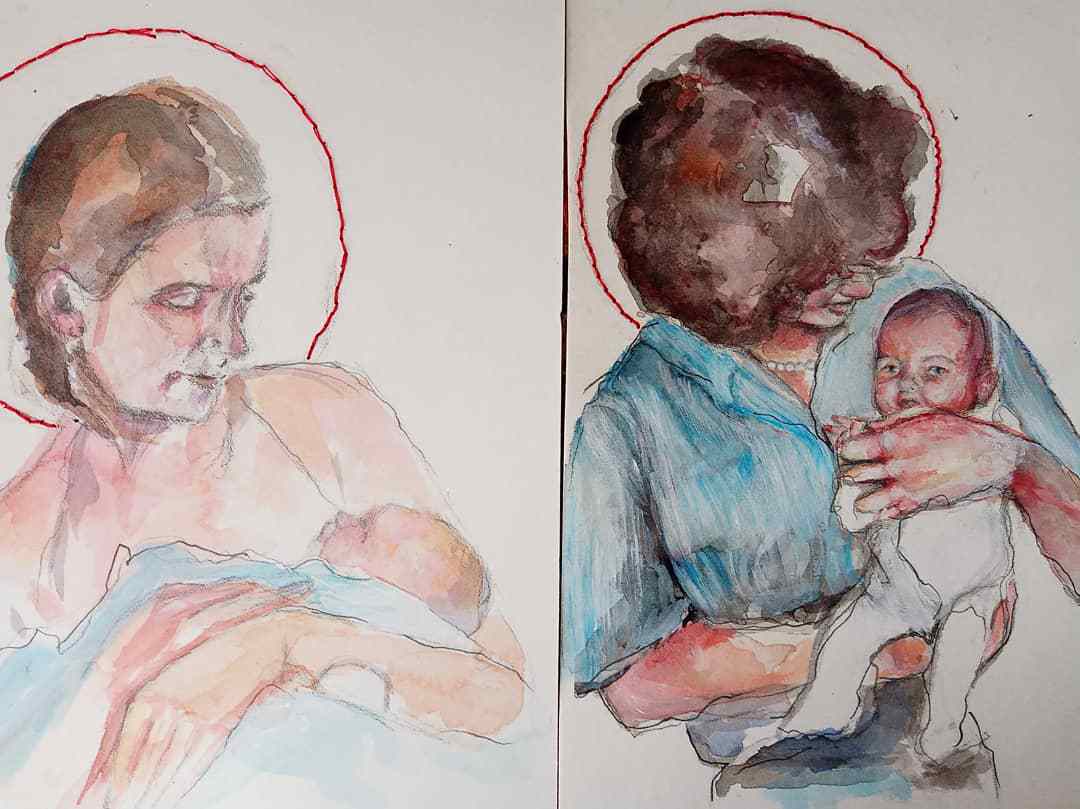
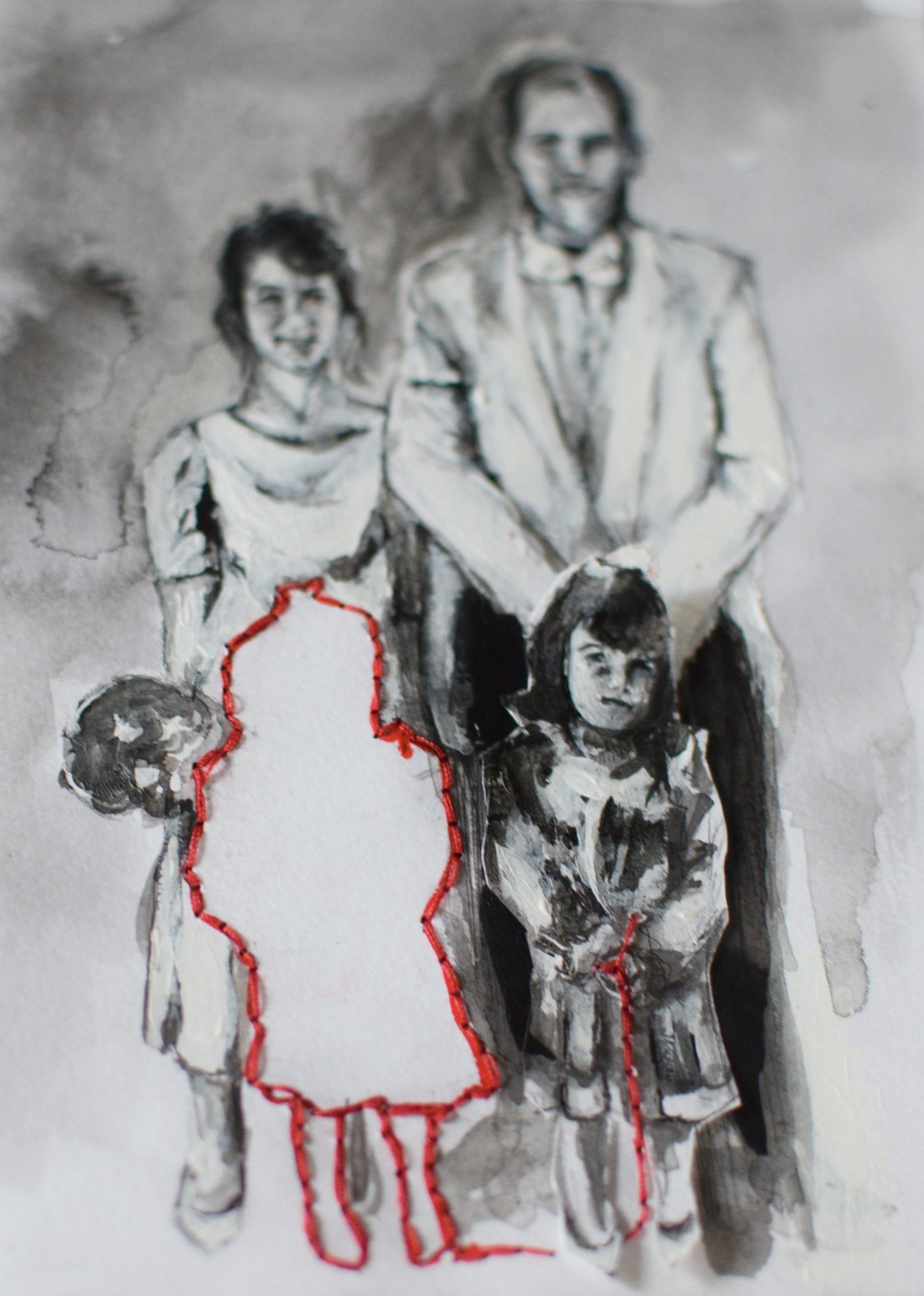
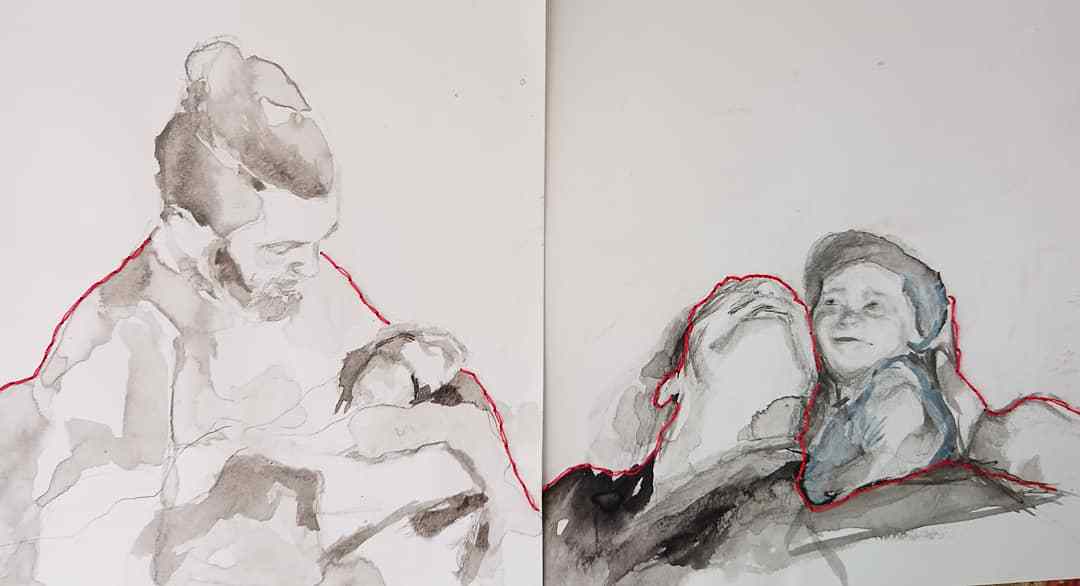
Who or what inspires you most?
I am inspired by anyone who is excited about what they are doing... other people's passion fires me up and makes want to dig deeper into the things that I love!
I am also so inspired by artists who seem to create without hesitation, who make art that feels unapologetic, if that makes sense.
Do you have a routine for making art, or do you just work whenever inspiration strikes you?
I am most productive when I carve out a little dedicated time to sit down and work every night!! Unfortunately, my discipline seems to come and go (haha)! Right now, my two youngest kids are still very little, so waiting for them to be in bed is my best bet if I want to get any real work done, and since I still lay down with my youngest baby to get him to sleep... it's hard to find the motivation to get up and go to my desk after that!! But when I have momentum going and am on a good ‘work streak’ I will make a cup of tea, go back to my space, put on a podcast or some music (or a movie if my daughters wanna come sit with me while I work), and I just sit at my desk and do something — anything — for at least an hour before bed!
I started creating smaller pieces with ink and thread on paper because I can easily pick it up to work on whenever I have a moment between other tasks. Clay has also been great because all of my kids will sit down with a chunk of clay and work alongside me!
Another must for me is being able to leave my desk messy... when I can leave my work out in the middle, it makes it feel easier to jump back in when I get time. My husband hates it, but my workstation is always a disaster, and I like it that way.
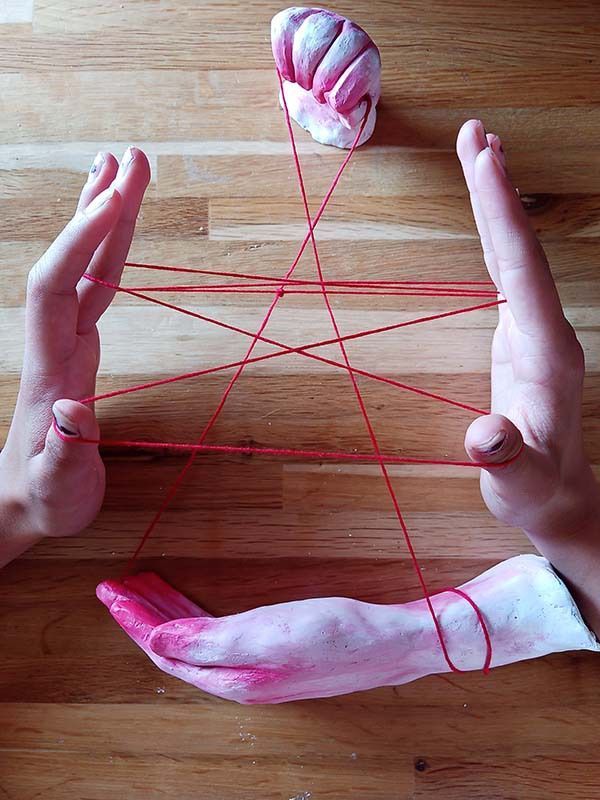
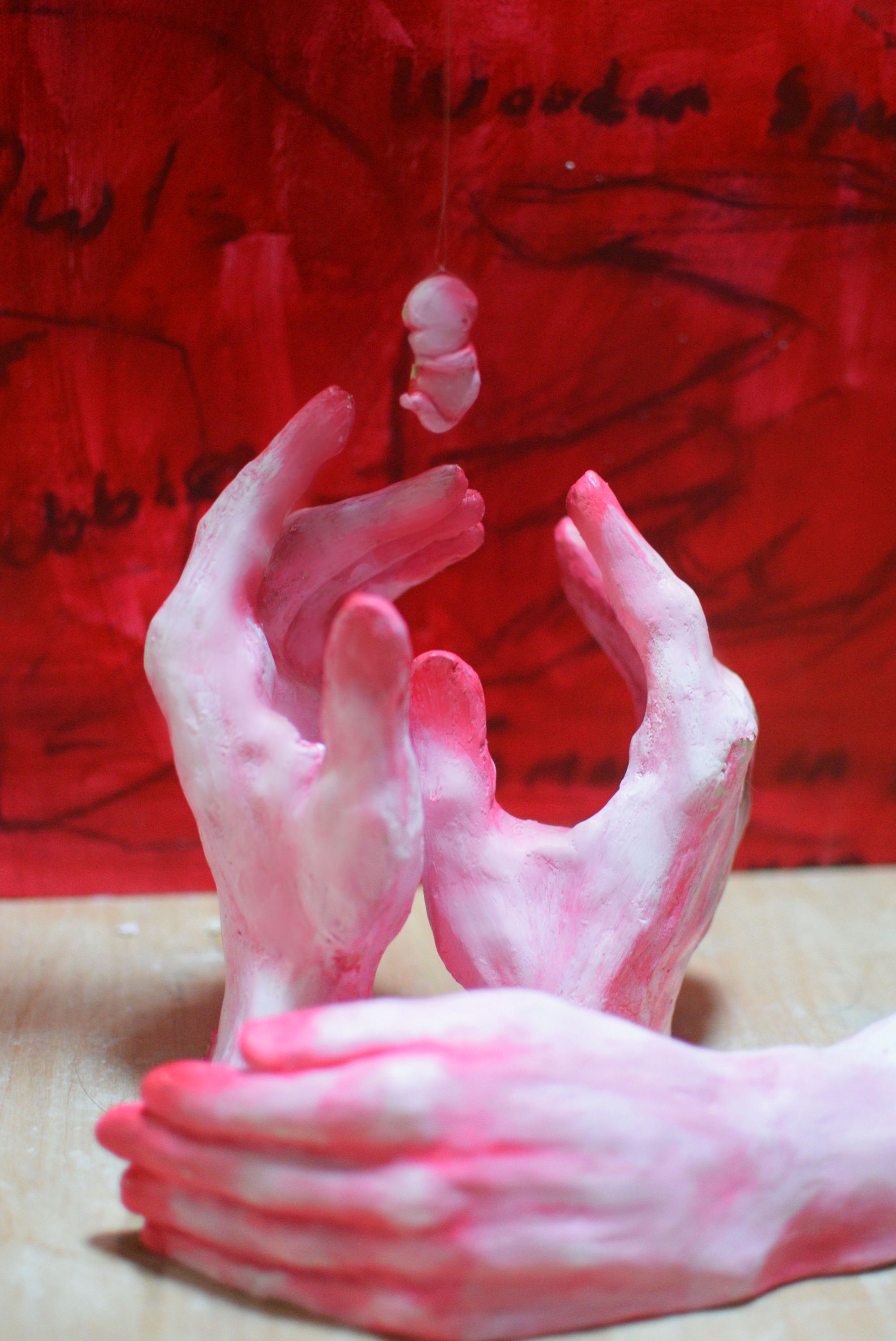
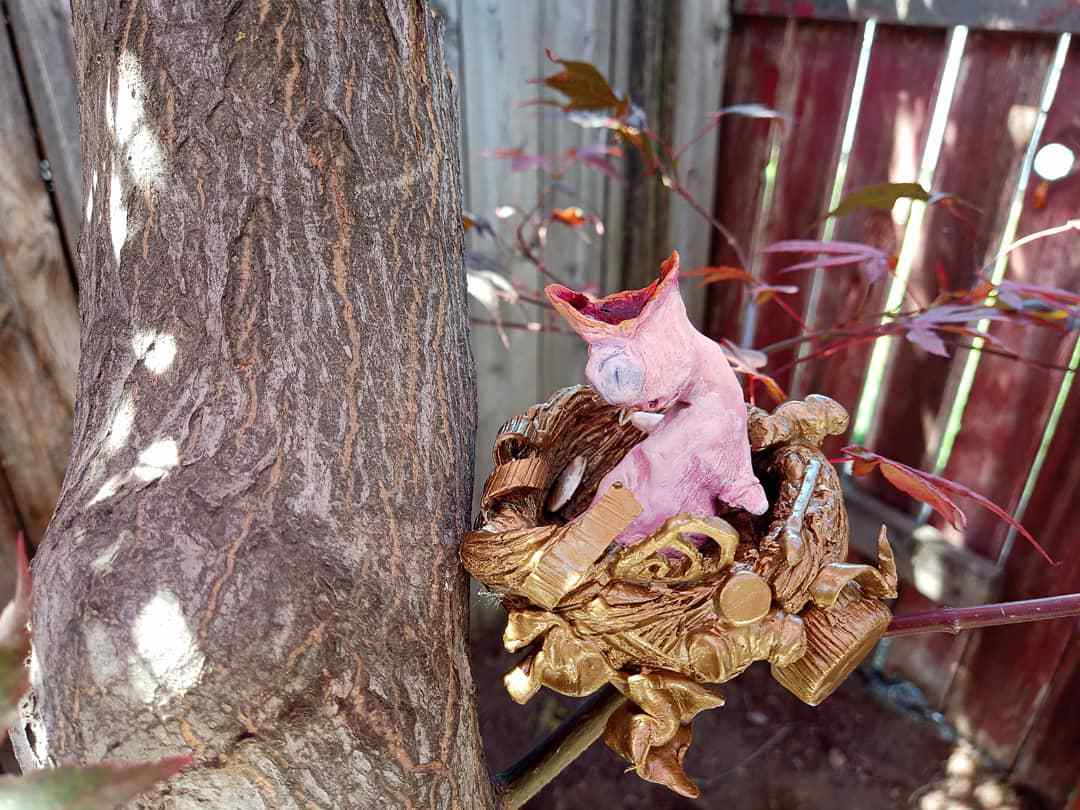
Your sculptures — the hands, the bird, etc. — are so realistic looking. What is your technique?
Thank you so much for saying that! This summer is the first time I have attempted working with clay. It has always intimidated me, but I took online classes and learned a few basic handbuilding techniques and fell in love!! It is so meditative and grounding to work with such a tangible material, and I can’t wait to learn more! So far, I have just been using Crayola air dry clay (haha), and mainly shaping the clay using a combination of pinching and coil building. Then, I score the different pieces and using slip to connect the shapes, and I smooth those shapes with water and a paint brush. Then I paint them using regular acrylic paint!
Your latest pieces have a literal 'common thread'. What does the red thread symbolize?
The red thread symbolizes the way that our experiences connect us. I think a lot about how the experiences my great grandmother, my grandmother and my mother have been passed to me and then to my children whether or not I have conscious knowledge of them, and how I have the ability to change or embrace those narratives in my familial line. The idea of this common thread also extends outside of family groups and to humanity as a whole, we are all connected through the experience of being human and we are all responsible for one another. I think Western cultures are so dedicated to themes of individualism that it breeds otherness which leads us away from connection and compassion for those around us. I want my art to serve as a reminder of our shared experiences, a reminder that we are the same, and we are in this together.
Can you speak more about the theme of intergenerational trauma and healing?
As the mother of four children, I often find myself exploring the transformational nature of birth, and the intimate generational stories, frequently unspoken, passed through familial lines. My most recent pieces explore the possibility that our body may hold memories of our ancestor’s experiences — memories we are not cognitively aware of, but are influenced and shaped by.
Research on the topic of epigenetics and intergenerational trauma has shown that healing happens along familial lines when a bridge is created between spoken and unspoken experiences, allowing for conscious decisions to shift behavioral patterns and coping mechanisms that may have been developed adaptively as a response to traumas. I feel like American cultural patterns tend to value production over connection, and individualism over collectivism. These themes, paired with our history of colonialism and cultural erasure, have contributed to a loss of community, ancestral identity, generational ties, fractured family units, and a decline in mental health that make those bridges difficult to form. I aim to foster dialogue through my work, which encourages strengthened intergenerational relationships and communication, and creates a sense of empowered awareness.
What is the inspiration for the cat's cradle piece? (You could also go into more specific detail about another piece or two that are your favorites in this series)
The cat’s cradle piece comes from the same inspiration as the other thread pieces, but more specifically, was an exploration of the ways my identity is wrapped up in Motherhood, to the point of often feeling that my body, my time, and my energy were not my own. Also, it explores how my experiences — the wounds I have worked to heal and those I have yet to heal — influence my children and their experiences and views.
The pieces with missing figures are exploring the way we are impacted both by people's presence in our lives and their absence — how somebody's absence takes up space in our lives just as their presence would. The circular piece (Within and Without) is created using fabric from one of my grandmother's shirts, and is an expression of the ways in which her presence (and now, her absence) have shaped my identity — the way her stories and her experiences live on through myself and my children.
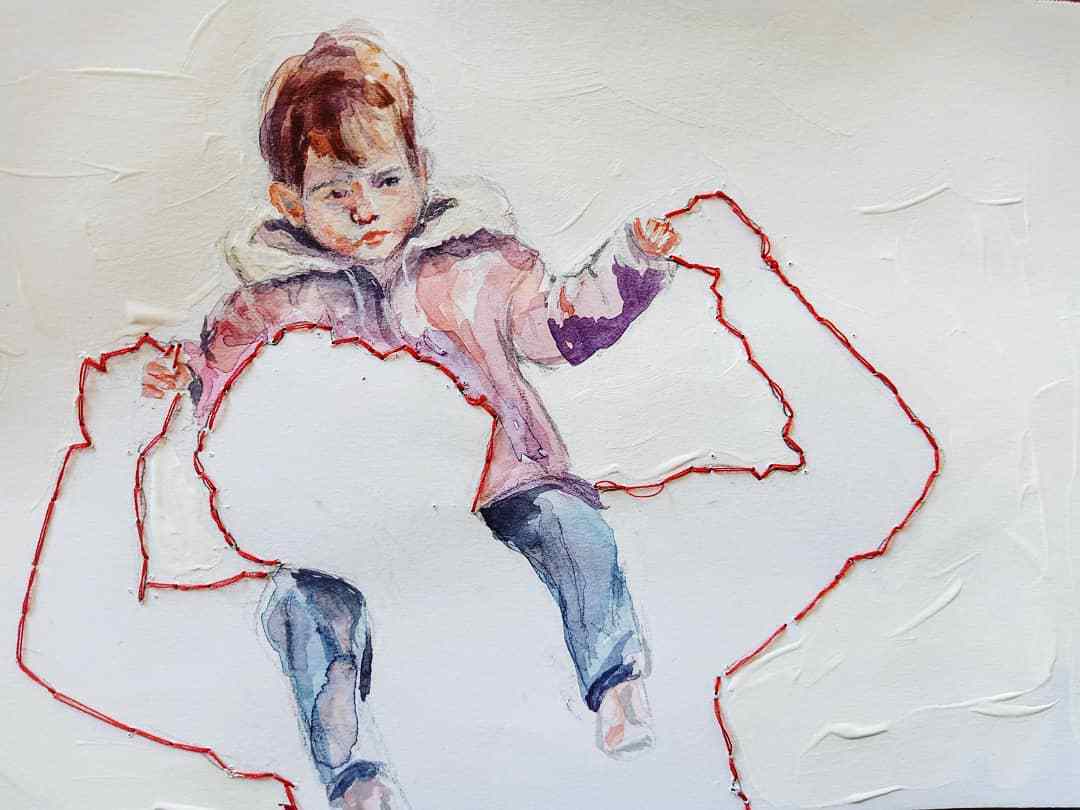
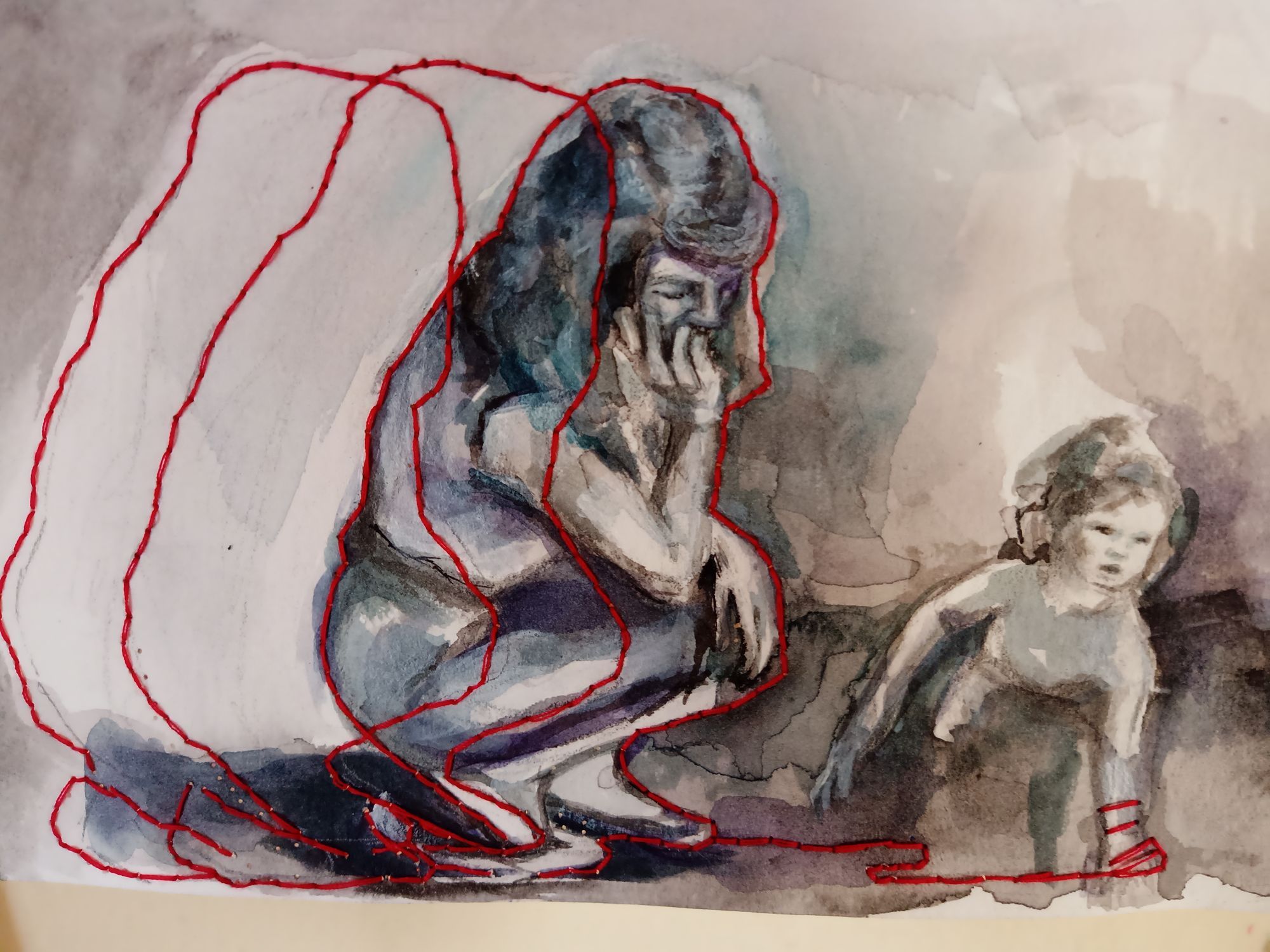
The piece with the little girl riding the empty shape of her father's shoulders explores the tangible mark an absent parent creates in the formation of a child's sense of self.
Other pieces, like Before Me (the piece with the mother kneeling by her child, her shape outlined behind her), are meant to be an exploration of loss in another sense… the way grief, shame, depression, anxiety, or trauma can rob us of parts of ourselves — the grief of losing our self-worth, our will to continue on, our sense of belonging, or any number of things.
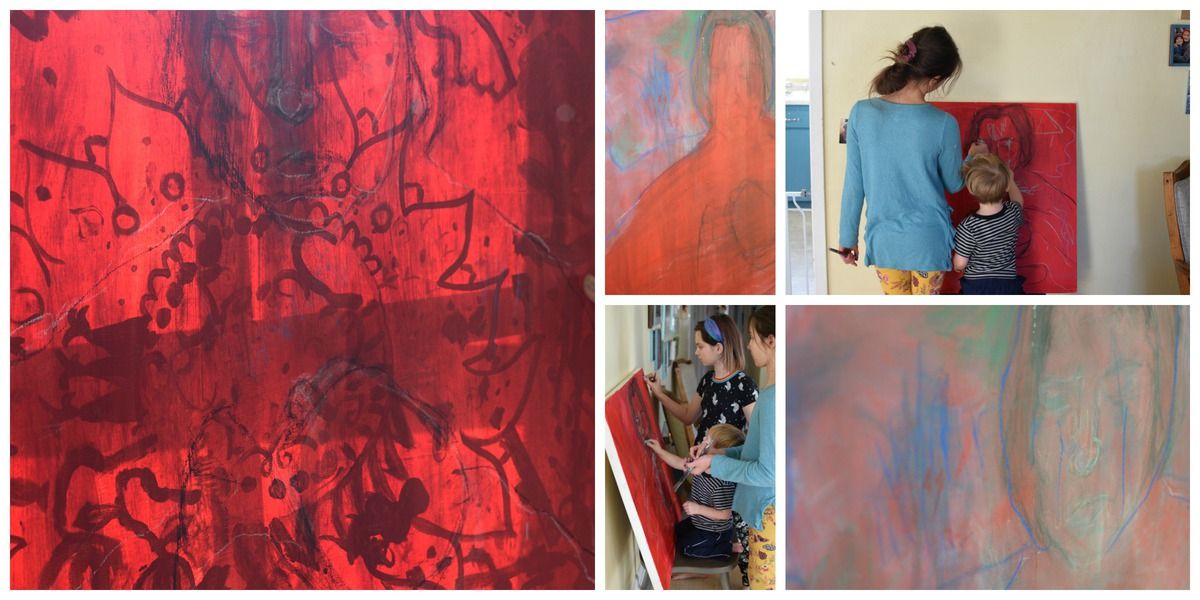
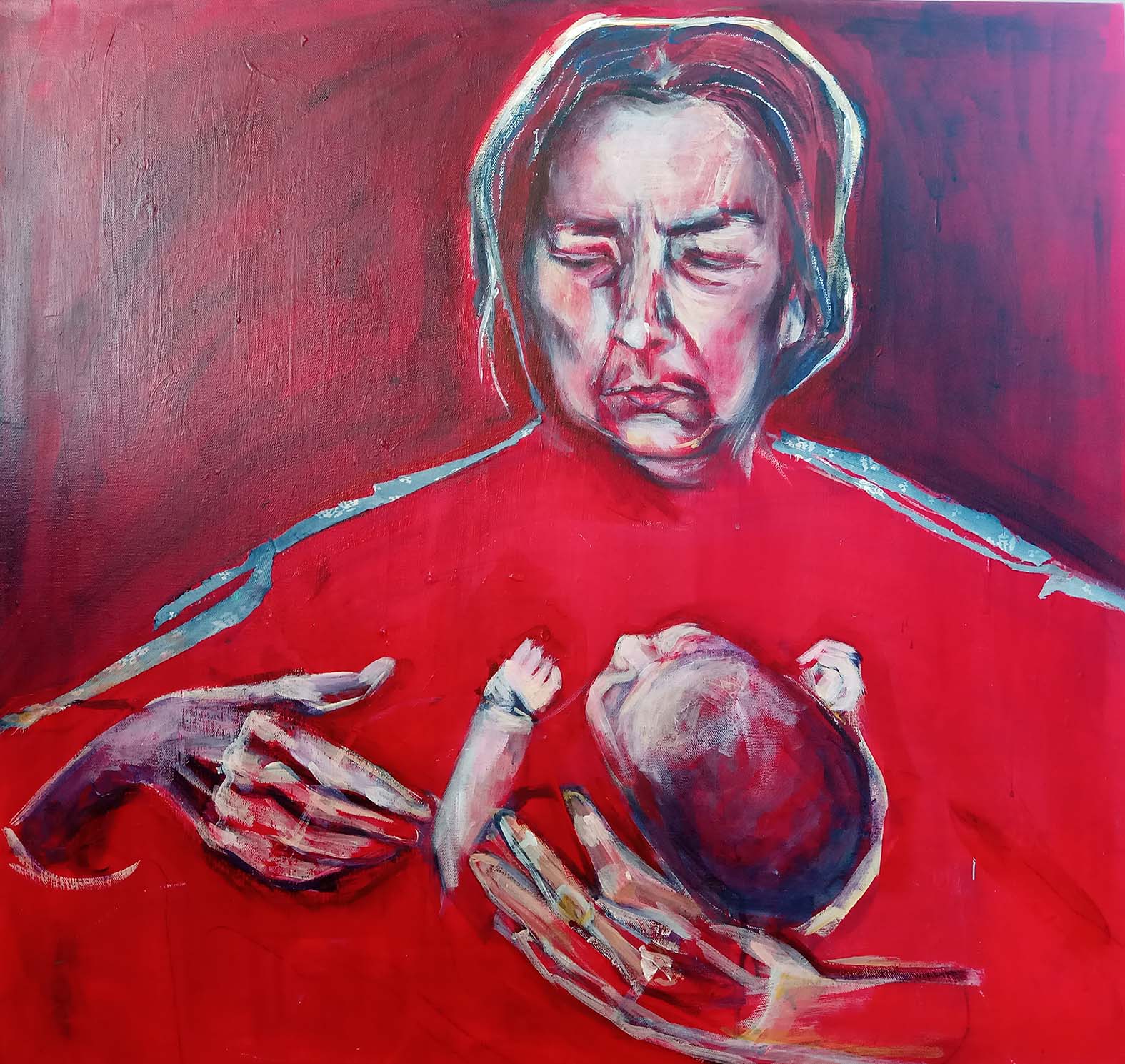
The piece with my grandmother holding my oldest (large in red piece) was a way to explore the parts we don't know that exist inside our loved ones — the stories we haven't heard, experiences that have not been shared but have been instrumental in creating the person before us. The canvas this is painted on has many layers beneath it, and only when it is illuminated do you see what is hidden behind the final image.
I have several works in progress exploring this theme! My children collaborated on this particular piece, contributing marks to early layers, as a way of symbolizing intergenerational ties. (I have some photos of the process for this piece)
I'll ask the question you usually close with in your interviews: How can the Tri-Cities community support local artists?
Attend art shows and art events and share about them with your friends and family!!! Buy art from local artists! Advocate for the arts in your wheelhouse, whatever that may be!
Ashleigh Rogers is the Creative Director at DrewBoy Creative. She is an artist and art instructor living in Richland, Washington with her husband and three children.
Find her on Facebook: fb.com/AshleighRogersArt or Instagram: ashleigh.a.rogers
Sara Quinn is the Editor in Chief at Tumbleweird. She makes pixel art, writes stuff, reads A TON, and plays a lot of video games ;)
